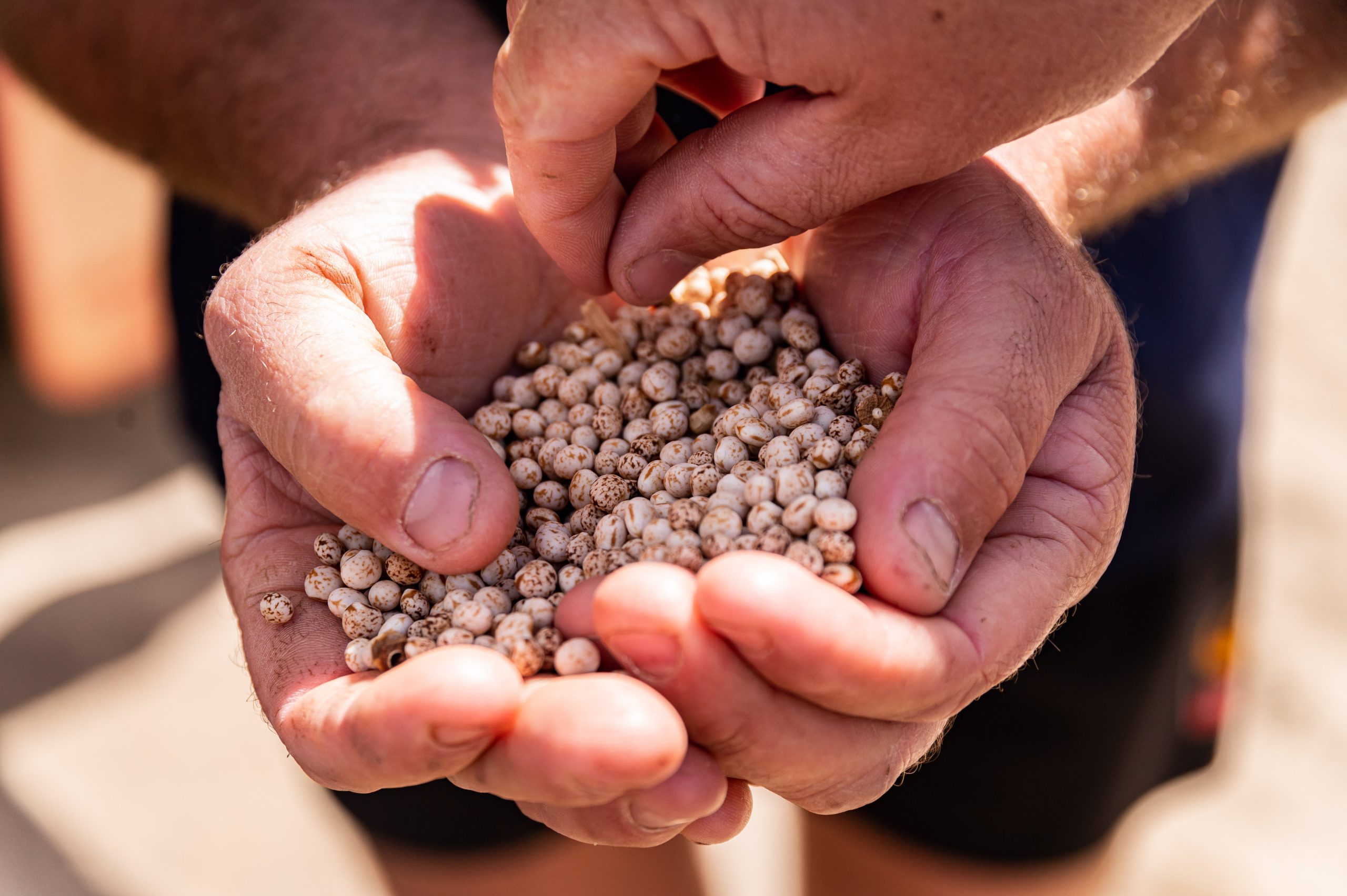One thing that often gets overlooked is the measurement of seed size to calculate the optimum seeding rate based on desired plant densities. Seed sizes vary substantially from year to year, which means our ideal seeding rates should be adjusted accordingly. By using a stock standard seeding rate every year, there may be unrealised yield, grain quality, or seed cost gains to be made.
So, how do we calculate sowing rate? Figure 1 tells you exactly how.
![]()
Figure 1. Seeding rate calculation (GRDC Grow Notes).
So, to calculate this, we need seed size, target density, germination rate and establishment rate. For seed size, you can simply weigh a handful of seeds (make sure to write it down), count them, and adjust the weight of the count of seeds to what it would weigh for 1000. Another option is to use an app like CountAnything – Object Counter or other apps (this one is free). Seed counting trays also make life easier, such as these at https://www.trialsupplies.com.au/product/seedsmart-grain-counting-trays/.
Next, we need our target density.
For wheat, the rule of thumb is 40-50 plants/m2 per tonne of grain (GRDC Wheat Grow Note).
For malt barley, a target density of 150–180 plants per m2 is appropriate to maximise yield while maintaining grain quality. For feed barley, a higher target density of 180–220 plants per m2 is suggested to improve the competitiveness of the crop against weeds and maximise yield. If growing feed barley in paddocks without weeds, the target density can be adjusted downwards to 150–180 plants per m2. However, a 1–3% yield advantage is obtained by keeping target densities at the higher density (180–220 plants per m2) suggested for feed barley, even in the absence of weeds (DPIRD Barley Sowing Guide 2025).
The recommended plant density for oat grain production is 160-240 plants per m2, based on the rainfall zone. For oaten hay production, plant density is between 240-320 plants/m2, with higher density helping to compete better with weeds and to reduce stem thickness, which is desirable in quality export hay (DPIRD Oat Sowing Guide 2025).
For lupins, it’s best to meet a target plant density of 45 to 70 plants per m2. Trials across WA have found that optimum plant densities will change depending on location and season. There is typically little or no yield penalty if plant densities are higher than the recommended range of up to 70 plants/m2, but yield losses in newer varieties can be substantial if lupin plant populations fall below 40 plants per m2. This is because these varieties rely on pod set on the main stem, rather than on branches. (GRDC Grow Notes).
The germination rate is the percentage of seeds that germinate in ideal conditions. This can be obtained by doing a DIY test for sending to a laboratory. DPIRD has excellent instructions here: https://www.agric.wa.gov.au/barley/factors-affecting-grain-crop-seed-germination?page=0%2C4#smartpaging_toc_p4_s0_h2
The establishment rate is the percentage of plants that emerge compared to the number of seeds which is dependent on conditions and soil. We can calculate this by assessing the number of plants that have germinated per m2 and dividing by the number of seeds seeded per m2 based from 1000 seed weight and seeding rate.


